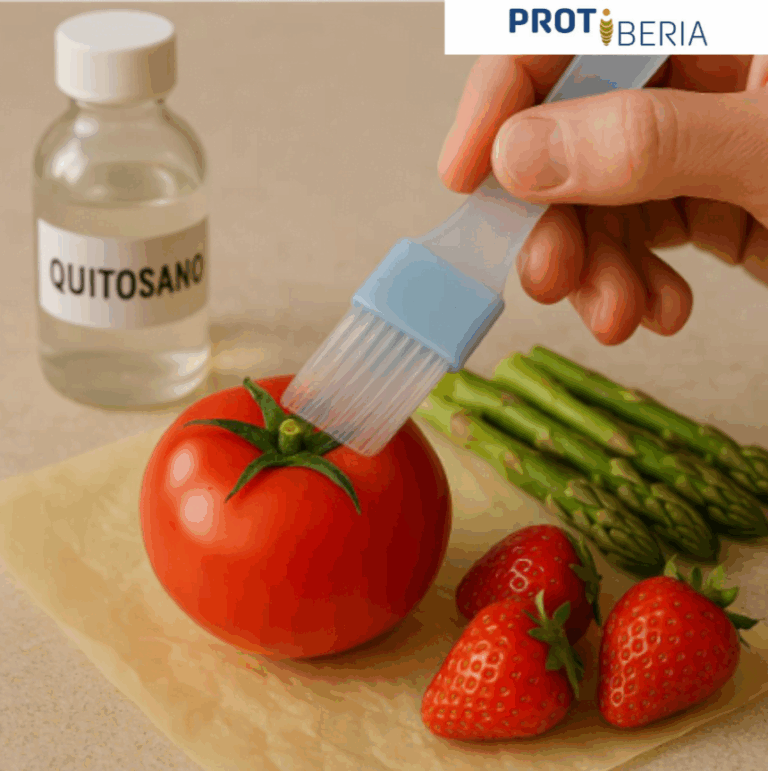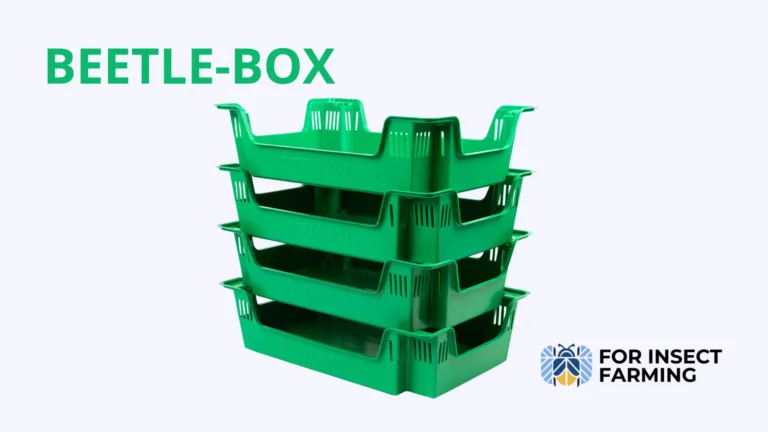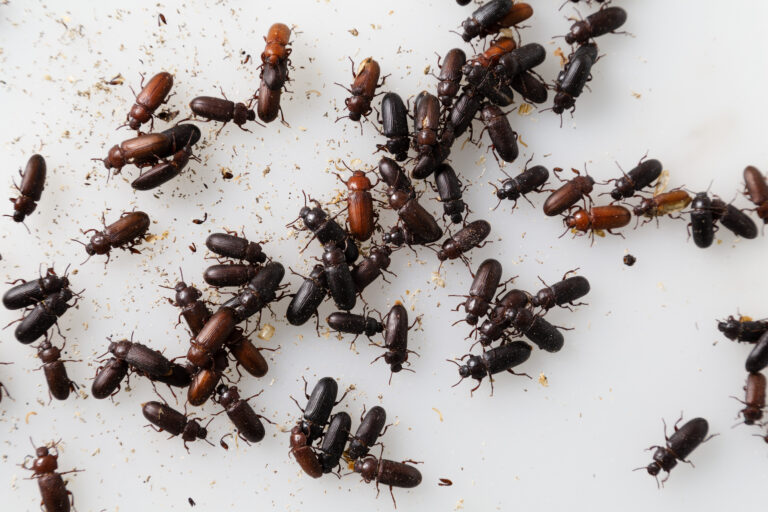| Chitosan is a biopolymer derived from chitin, with antimicrobial, biodegrdable, and film-forming properties. Its use in food packaging helps extend the shelf life of fresh and processed products, presenting itself as a sustainable alternative to traditional materials such as plastic. |
Need for Sustainable Packaging
Food packaging plays a vital role in the preservation, transportation, and presentation of products. However, the widespread use of plastics has caused serious environmental problems due to their low biodegradability.
In this context, science is seeking sustainable solutions that maintain food quality without generating persistent waste. This is where chitosan stands out as a promising alternative.
This polymer, derived from chitin, has unique properties that position it as a functional material for biodegradable and edible packaging. Chitin is a natural polysaccharide that forms part of the external structure of many arthropods, such as insects, crustaceans, and fungi.
Chitin is extracted from the exoskeletons of insects, and one of the most innovate and recent approaches is its extraction from Tenebrio molitor, considered an emerging source of this biopolymer.
Traditionally, chitin has been obtained from the exoskeletons of crustaceans such as shrimp and crabs. However, this method poses various environmental and sustainability challenges.
In contrast, extracting chitin from insects like Tenebrio molitor offers several significant advantages:
- More controlled and consistent production
- Lower environmental impact
- Suitable for circular economy and large-scale production
Properties and applications of chitosan
A biopolymer with multiple benefits:
Chitosan is characterized by its antimicrobial activity, its ability to form strong films, and its biodegradability. Thanks to its chemical structure with amine groups (charged positively), it can interact with bacterial membranes (changed negatively), destroying them and preventing microbial growth.
Moreover, chitin’s ability bind with metallic nanoparticles adds value as an active packaging material, helping to extend the shelf life of perishable foods without direct incorporation of metals into the food itself.
Applications in food packaging
Chitosan can be applied as an edible coating or flexible film, offering protection against external agents. This is especially useful for fruits, vegetables, diary products, and meats, where ir can prevent microbial spoilage.
Chitosan films, in addition to being edible, are transparent, bioadhesive, and non-toxic. They integrate well with food products without altering their sensory characteristics, providing functionality without affecting their presentation.
In addition, various research groups are developing chitosan films that can respond to environmental changes, such as variations in pH or temperature, thereby providing information about the condition of the packaged food.

Potential in animal-based foods:
One of the sectors with the greatest potential is animal-based foods. Chitosan has shown strong antimicrobial activity against bacteria that spoil meat and fish. In addition to its antioxidant properties, which slow down lipid oxidation in meat and fish that causes off-odors, discoloration, and a reduction in nutritional value.
Thanks to its broad-spectrum action, chitosan can be applied as a packaging solution, reducing the need for synthetic preservatives and enhancing food safety.
Conclusion: Toward a greener future
The use of chitosan in food packaging represents a tangible opportunity to reduce the environmental impact f the food industry. This biopolymer, obtained from industrial by-products, transforms waste into added value.
Its effectiveness, sustainability, and versatility make it a strong candidate to replace conventional plastic materials, aligning with new trends in conscious consumption and the circular economy.
Adopting technologies such as chitosan films not only improves food preservation but also actively contributes to environmental protection.
REFERENCES
Valenzuela, V.C., & Arias, J.I. (2012). Potential applications of chitosan films in animal-based foods: a review. Avances de Ciencias Veterinarias, 27(1), 33-47. University of Chile.
Priyadarshi, R., & Rhim, J.-W. (2020). Chitosan-based biodegradable functional films for food packaging applications. Innove Food Science and Emerging Technologies, 62, 102346. https://doi.org/10.1016/j.ifset.2020.102346



